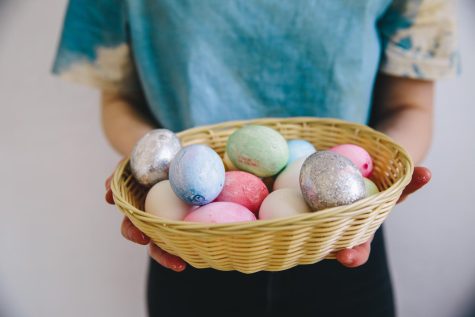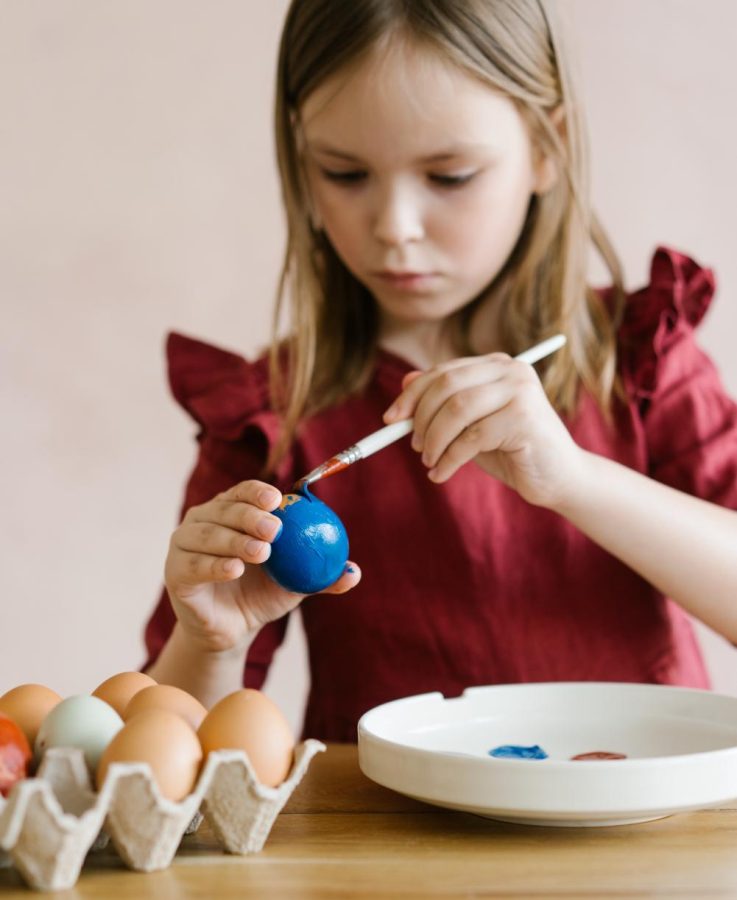How do you color your eggs?
April 10, 2022
The coloring of the Easter egg has been a long standing tradition among families throughout the world and has been a long standing tradition in the Christian faith. But, why exactly do we color eggs for Easter?
According to the Central Minnesota Catholic Magazine, the egg was actually a sign of fertility and connection to the divine as they were a vessel for new life to emerge. Later, it came to represent in Christianity the tomb to which Christ came forth at the time of his resurrection. Many Christians fasted during the time of Lent leading to Holy Week and obtained from animals products such as eggs. Eggs would then be colored to symbolize the coming to an end of the season of Lent and the new hope of the resurrection.
The general reason behind coloring Easter eggs exists in the U.S. and around the world, but how they are decorated is an entirely different story. As people from the U.S. the first image of Easter egg decorating is a carton or basket full of eggs with dyed pastel colored shells.
In Greece, eggs are dyed a vibrant red color that represents the red blood of Christ at his crucifixion and also represents the hope of the resurrection with the white egg white inside the hard red colored shell of death.
In the Czech republic, Easter eggs are decorated with wax which is peeled off after the dying process. This tradition has its roots in old paganism and predates Christianity; however, it is now a staple in the Czech republic.
In the Czech republic’s neighbor Slovakia, traditional dye is commonly not used. Although store-bought dye is available to the public, they prefer the method of boiling them in onion skins and fastened plant sprigs and leaves with a tin net which yields an earthy batch of easter eggs.
Like the people of the Czech republic, Ukraine uses wax in a method known as “pysanky ” in which they melt colored waxes to color the eggs. They then use a stylus to make beautiful, intricate designs. These designs can range from being abstract, geometric shapes to more floral designs.
Finally, if we head to the far east of Japan, we have a decorating method involving a decorative paper known as washi. Washi is a traditionally handmade, fibrous paper that is used for a plethora of things such as origami and even clothing. In the Easter egg decorating eggs are hollowed out, wrapped in paper, and then varnished over.
Easter is a holiday centered around hope and new beginnings and people across the world decorate eggs as a way to signify the hope and promise of Easter. So, whether you use a package of dying tablets, wax, onion skins, or paper; enjoy the good times with the people love and as you admire the delightfully decorated eggs you have finished, remember the message of hope, and the bright new beginnings ahead.














